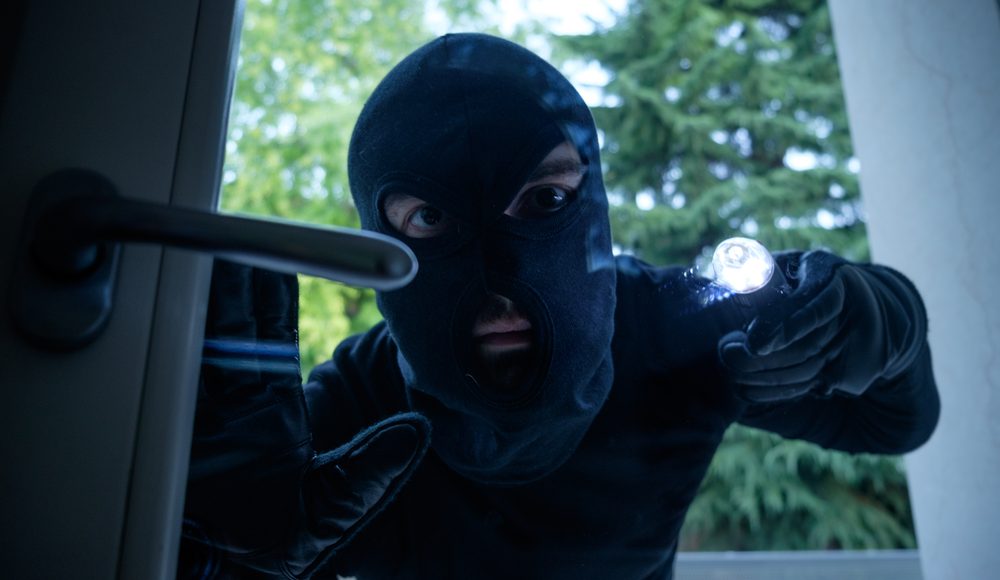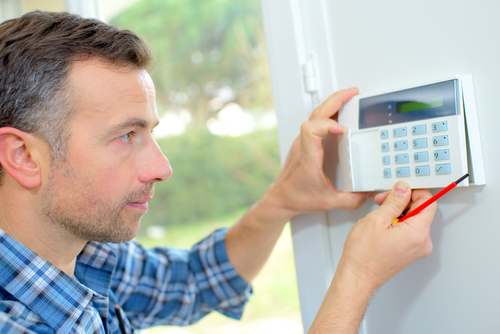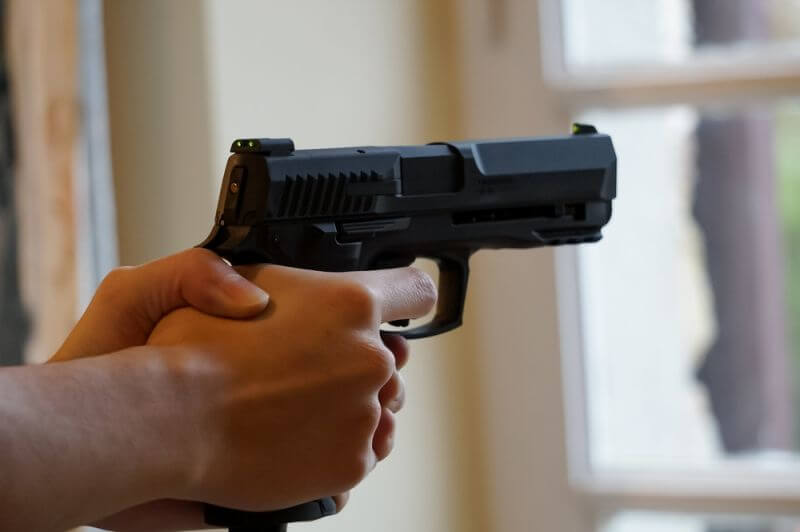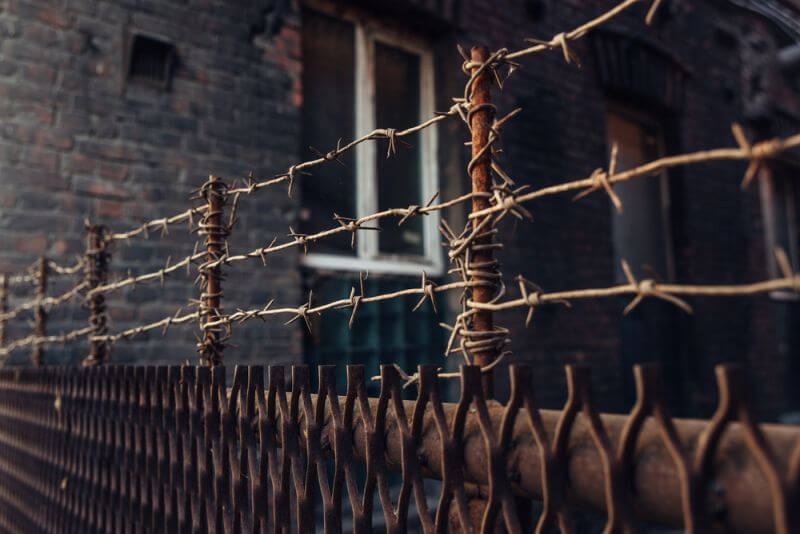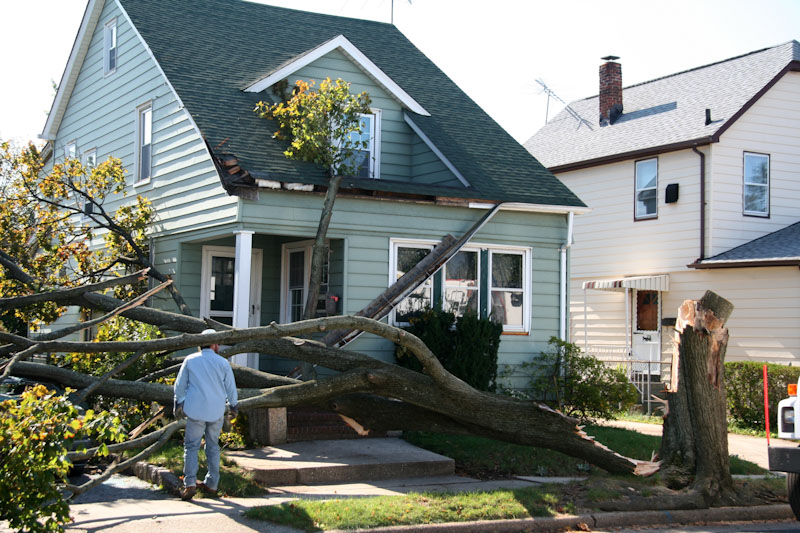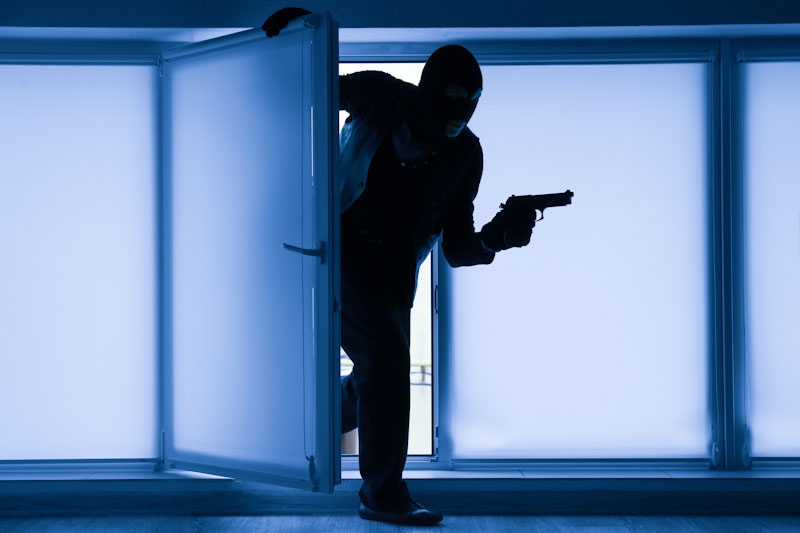- If you are happy with your security, so is your enemy.
- The only effective remedy for bad guys with guns is good guys with guns. All else is simply wishful thinking.
- In a fight, numbers matter. The side with more usually wins so enlist your neighbors and double up with relatives.
- One you have the manpower, use external outposts as LP/OP’s, fighting positions and station a QRF there. Even 2-3 people can make a big difference.
Most survivalists don’t need pointers like planting thorny plants as barriers under windows, how-to articles about building Home Alone-type booby traps or advice that McGruff the Crime Dog would give. They need strategies and tactics that work, that save lives and don’t cost a month’s wages to implement. Why? Because they understand that the modern systems we depend on to keep us safe are fragile and if or when the grid glitches, most of them will be rendered ineffective. They are not blind to the fragility of modern society either. They understand that when humans compete for resources, civility takes a back seat, the rule of law fades away and violent conflict steps out from behind the curtain.
Under these circumstances, normal security precautions such as locks, alarm systems and motion detector floodlights become trivial at best unless the way they are employed changes to deal with the new reality. To survive the higher order threats that accompany volatility, security measures must be adapted to deal with them effectively.
Personnel
The most effective way to stop bad guys with guns is with good guys with guns. Homeowners can install alarms, locks, cameras and safe rooms, but when it comes right down to it, the most a homeowner can hope to accomplish with any of these preparations is to delay aggressors and alert the home’s occupants to their presence. Homeowners should use that delay to arm themselves and alert others to come to their aid.
This is surely not a new concept to many of you but bear in mind that some 70-80% of preppers are new to emergency preparedness. Many of them are products of public school systems who have been taught that guns are an evil that causes violence, that the police can and will protect them and that proactive self-defense equates to vigilantism.
The truth is that firearms are inanimate tools that are incapable of action on their own and are exactly as peaceful or violent as the person controlling them and protecting one’s family is a duty that cannot be delegated to a security company for a “low monthly fee.”
I appreciate the efforts of law enforcement officers, but even when society and infrastructure is functioning, they can do precious little until after a crime has already been committed. Past catastrophes have shown that local law enforcement that is able to muster is often overwhelmed, outnumbered and quickly rendered less-effective by the effects of exhaustion. Furthermore, there is only so much that first responders living within the perimeter of a disaster incident can do because they must take care of themselves and their own families before they can help others. Thus, help must often come from organizations outside the affected area, which has taken days or weeks in past disasters and could take much longer in disasters that affect entire regions, countries or even entire continents.
You are responsible for your own safety and the safety of those in your household whether sheltering in place at home, in transit or after evacuating to a redoubt.
Enlist Neighbors
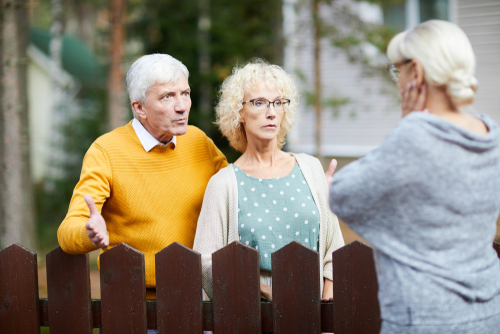
Defending a fixed site in takes people and weapons, so people tend to gather together into groups for security. Group makeup in disasters is typically family, neighbors and sometimes friends, but varies depending upon which lines society fractures. Politics, religion, ethnicity and economics can play a part. Regardless of how people split and regroup in response to emergencies, security requires numbers. In the absence of preparation, limited options for transport during catastrophes mean that group makeup most often gets determined by geographical proximity instead of preselection and survivors end up grouping up with neighbors.
Depending your social skills and neighbors, you may decide to make plans with able, like-minded neighbors ahead of time or to wait until a catastrophic event has given the neighborhood a paradigm shift to broach the subject of creating a mutual aid agreement of some kind.
A mutual aid agreement can take any number of forms, but the basic concept is that participants act as a QRF (Quick Reaction Force) to come to each other’s aid should one of the participants be attacked.
Double Up
Security is the most basic of survival needs and without security, medicine, shelter, food and water other needs don’t really matter. Because there is safety in numbers and maintaining proper security for a fixed site takes more manpower than most families have, families often double, triple or quadruple up to achieve the numbers necessary to meet security needs and work and rest in shifts.
Maintain a Reserve
Even if it is only a couple of people or a mutual aid agreement with a trusted neighbor, maintaining a reserve to act as a QRF will provide you with some flexibility to respond to the unpredictable nature of violent conflict.
Environmental Design/Modification
Prepare your property so that defenses can be put in place quickly. Much of what you need may not even be available if you wait until the aftermath of a catastrophe to prepare the field of battle. Boards, screening, sand, sandbags.
Harden Structure
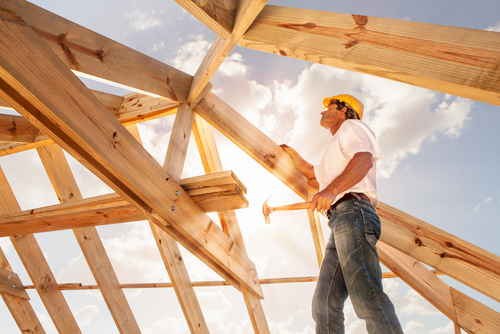
In deciding how to harden your home, many decisions will need to be made. One of them is whether to make security overt or covert in nature. Either choice will have drawbacks or advantages that cannot be foreseen, so where possible, give yourself the option to make security either low or high profile as the situation dictates.
Slow down attempts to reach the property and breach your home to give you time to react. This will likely include modification that you will not want to live with before a catastrophe, so store everything you will need to harden your home that you plan to install later should further hardening become necessary. You may want to board over some of the doors and all the windows on the first floor of a structure. Prepare boards for windows or install roll-down shutters and install blackout drapes to aid in light discipline.
Concealment
Concealment is basically screening that prevents the enemy from being able to see you, which is necessary to target you with direct fire from small arms, the benefit of which should be obvious. While hard cover capable of absorbing small arms fire might seem preferable, installing cover is expensive, time consuming and a lot of work, whereas screening is less expensive, quicker and easier.
Where possible, screening should be installed at perimeter fences to prevent adversaries from gather intelligence about your household, its occupants, capabilities, resources, habits and routines. Screening should also be installed along routes to sentry positions, fighting positions and LP/OPs (Listening Post/Observation Posts) to prevent their discovery or simply shooting their occupants when they are relieved or as the stand to. Screening should be extended higher in areas where the site is observable from higher ground.
Hard Cover
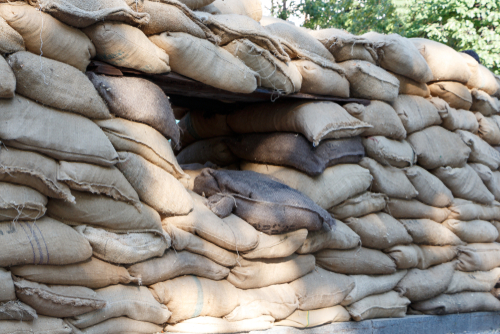
Hard cover is cover capable of stopping small arms fire such as steel-reinforced concrete, masonry, rock or two or more layers of sandbags. A certain amount of hard cover can be built ahead of time and then expanded up with sandbags as needed. Sand bags, of course, need sand, which can be stored in the form of a sand pit for kids to play in. Another solution is to remove sod and set it aside, dig a large hole, fill it with sand and then cover it over with top soil and replace the sod.
Keep in mind though, that sandbags are very heavy and could cause a cave in if used on upper stories. Steel plate is lighter and therefore better suited to used on upper stories. Another solution for wood-framed homes is to pour concrete slabs and install them in walls between studs. Spaces are measured between studs, molds are built to the dimensions and concrete is poured over steel mesh. The slabs provide cover to a height of about two and a half feet, affording cover to occupants who hit the floor. This method involves some work but is virtually undetectable without rapping on walls.
External Outposts
External outposts such as LP/Ops and fighting positions can be built on or near the property should be staff with two or more people if they can be spared. External outposts greatly complicate an attack, especially if the attacking force if unaware of their existence and can function as a reserve.
Rapid Egress
Make sure that the occupants can exit the structure through a concealed door to a screened escape route. Otherwise, you are fish in a barrel. The concealed door does not have to be large, should located in an area away from other doors that were originally built into the home and can be made after a catastrophe has occurred.
Another option is a screened ladder or rope that enables rapid egress form other floors. A strategy that has been successfully used by survivors is to board up or block all doors and windows on the ground floor and enter and leave the site by means of a screened ladder which is lowered as needed and can be pulled inside the building.
Safe Rooms
Safe rooms are useful to buy if a QRF exists that and it can be contacted to counterattack. This is essentially what happens when the owner of a safe room calls the police to come chase away home invaders. Without communications and a QRF, the safe room only serves to slow attackers long enough for the survivors to arm themselves and mount a defense. A defender who plans is to sit inside the safe room until attackers go away of their own volition can be burned out.
Equipment/Resources
Equipment and resources are necessary for defense but are not the sum total of an effective defense. But are only one aspect of defense.
Armament
“Remember the first rule of gun fighting … have a gun.”
Jeff Cooper
In the hands of well-trained individuals, firearms and other armament give defenders teeth and fangs. Without them, you will not be able to stand up to an enemy who has them. Once a proficiency has been attained with lethal arms, I encourage survivalists to also attain proficiency with less-lethal arms. Use of lethal force is not always required and appropriate use of less-lethal force can go a long way to prevent additional conflict.
Communications
Communications enable defenders to act as a unified element and are necessary to direct external outposts and activate QRFs. Hence the saying, “You ain’t got comms, you ain’t got jack.”
Alarms
The function of the alarm is to alert human beings to the presence of intruders. The farther from the site an alarm does this, the longer the defenders will have to prepare to fight or flee, so the most effective alarms for survivalists allow placement of sensors out beyond or near the perimeter, not just at the building. Alarms that only notify the household that an attacking force has already gained entry to the home do not give the occupants much time to respond.
When evaluating alarm for survival use, survivalists must consider how effective the system would be in a crisis. The principal elements of an alarm system are the control panel, sensors and reporting mechanisms. The control panel contains the “brain” and a backup battery. Sensors detect unauthorized intrusion using motion detectors, magnetic sensors, beams, vibration sensors, contacts on door and windows and so on. Reporting mechanisms summon someone to come do something about the intrusion using cellular, radio or telephone communication, lights, sirens, etc.
Alarms typically have lots of sensors and only one or two reporting mechanisms, so if an adversary can disrupt the reporting mechanisms, he doesn’t have to worry about all the sensors. Survivalists must evaluate who the reporting mechanism will alert, how will it do it and how effective would the response be in a crisis.
Alarms are also useful to lone survivors or sites that are undermanned. People need sleep. Dogs, birds and livestock have been used as biological alarm systems for millennia and can detect intruders before they gain access to the home, so learn what to listen for and makes sure that you can hear them.
Improvised Munitions
Yes, I know most boobytraps both dangerous and illegal, so no need to go straight to the comments. These tips are not for neighborhood watch or 4th of July. These are the kinds of weapons that are used when the only thing people are worried about is survival. Your enemy will not be abiding by some rule book. If you do, you are putting yourself at a disadvantage.
In survival situations where the rule of law has evaporated, less-lethal boobytraps can be used to detect or ward off attack. If necessary, command detonated improvised munitions placed in areas attackers are likely to use for staging, to stack up or to seek cover, can stop an attack in its tracks without unnecessarily endangering members of your household.
Practices
No amount of defense is effective without proper training and adherence to security SOP.
Offensive Mindset
The survivalist’s primary objective should be to avoid a fight. If that is not possible, the best defense is a strong offense. Prepare caches off-site so that if you are dislodged, you can mount an effective counterattack to take it back at a time of your choosing, but the best time for a counterattack is often before the enemy has had a chance to regroup and rebuild the defenses.
All Round Defense
A survivalist’s home should be able to repel attack from any direction and so should all external outposts. Just keep in mind that mounting an all round defense requires a minimum of three people.
Depth of Defense
Defenses should absorb an attack instead of being broken by it. Should they enemy get past the first line of defense in an area, they should immediately be engaged by a second line of defense to prevent them from effectively flanking the next defender over. Encountering another layer of defense means that if the attacker attempts to flank the next defender over, he exposes himself to being flanked.
Red Team Your Defenses
Have a competent team act as an OPFOR (Opposing Force) and plan and execute a simulated attack on your property to expose weaknesses and areas that are important to an attacking force. Doing so will reveal areas that are useful for reconnaissance, cover and concealment and once discovered, their use can be denied to the enemy by mining them, erecting obstacles, removing concealment, etc.


